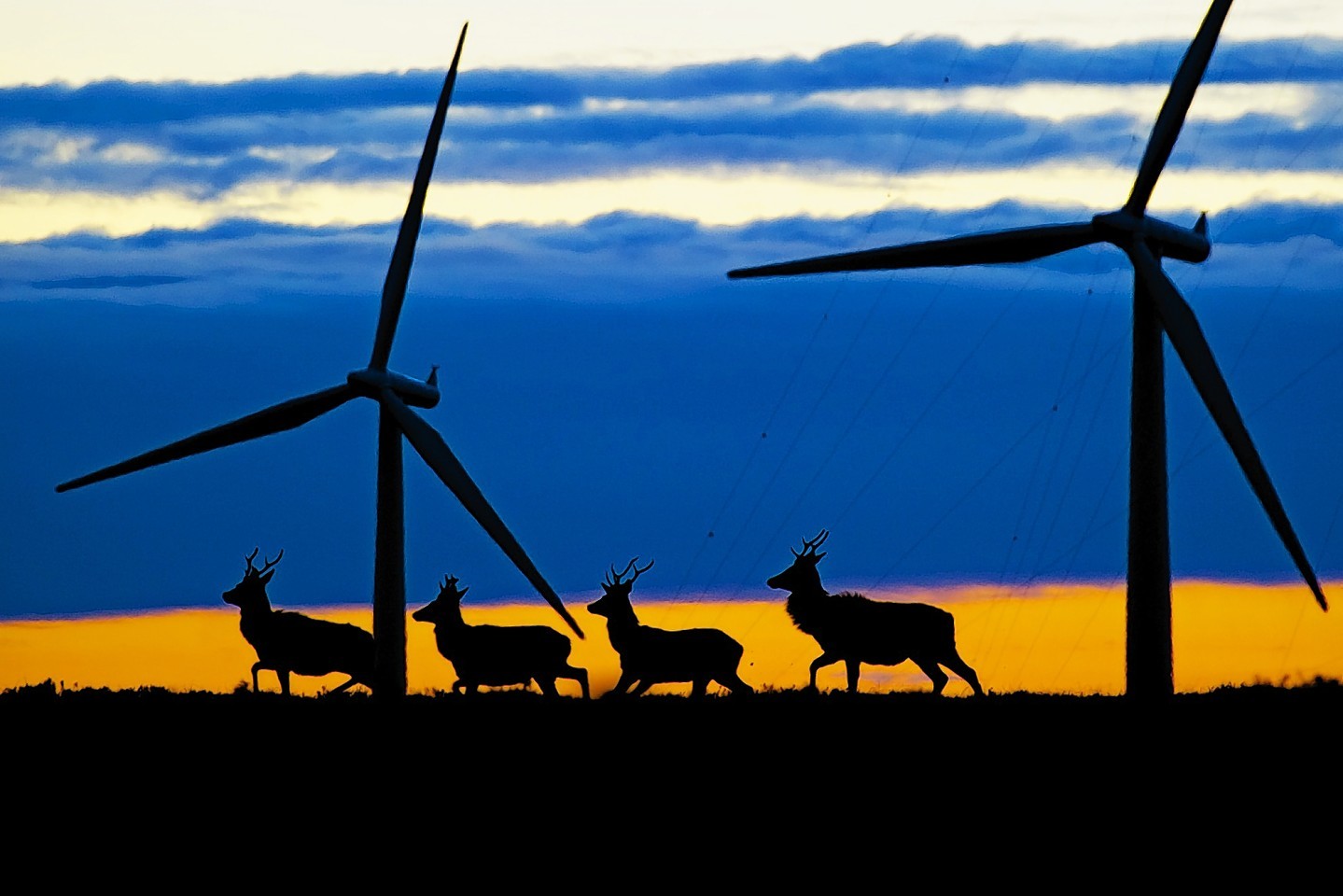A wind turbine project which threatened to divide a north-east community has been revived – just months after it was rejected by councillors.
Farmer James Gammie had applied to build three 260ft masts on three neighbouring plots of land and claimed they would boost the local community.
But despite more than 500 letters and e-mails of support for his proposals, members of the local authority’s Banff and Buchan area committee refused to give permission for two of the turbines and delayed making a decision on the third.
Now Mr Gammie has successfully appealed the decision with the Scottish Government and plans to start erecting the masts on sites at Cairnhill, Gawnsmoss and Gledsgreen, about three miles south-west of Banff.
When the proposals were first unveiled, Aberdeenshire Council planning chiefs were flooded with more than 225 objections from residents who argued there were already too many turbines in the Banffshire countryside.
Concerns were also raised about noise pollution, house prices, tourism and shadow flicker, and local authority officials recommended the scheme be rejected.
Residents who heralded the original decision to block it have been left stunned by the decision of Scottish Government reporter David Buylla to overturn their elected members’ ruling.
Local campaigner Dr Jane Farquharson said: “Even though planners and local councillors may be concerned about protecting small communities from such inappropriate-scale industrial development, this counts for nothing if developers can go over their heads to the Scottish Government.
“For us, this whole drawn-out planning process has been a waste of time and a fiasco.”
Dr Farquharson, whose home is less than half a mile from the proposed developments, was disappointed Mr Buylla did not visit her property to consider the impact on the landscape.
“It has all boiled down to one man from the Scottish Government looking at the application from the developer’s point of view – quite literally in this case – and deciding that the hugely negative impact on the community and the landscape is not important.”
Neighbour Lorna Chapman echoed Dr Farquharson’s comments and said: “Rural home owners in this area really are now just lambs to the slaughter.
“I say this as the reporter has thrown out any protection we had from the Landscape Capacity Report, any protection from cumulative impact leaving only a total free-for-all now with no protection left for the suckers left trapped and forced to exist in the middle of one massive, haphazard, ill-thought-out windfarm.
“Do I feel aggrieved? Yes, I most certainly do. Come to Banff and marvel at the wind turbine landscape to beat all others.”
In his appeal decision, Mr Buylla concluded that despite local objections the development would not have a negative impact on the landscape.
He said: “It is almost inevitable that the construction of large man-made objects in a rural setting will cause significant visual amenity effects in the immediate vicinity of the site.
“It is essential therefore the wider public benefits of reduced greenhouse gas emissions, energy supply diversification and local economic benefits are weighed against such localised harm.
“I conclude that the development plan conflict and limited adverse impacts are outweighed by the public benefits I have identified and that the balance lies in favour of granting planning permission to all three.”
Mr Gammie did not respond to a request for a comment last night.
